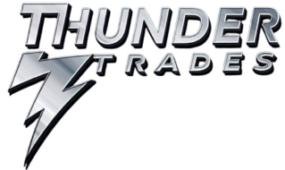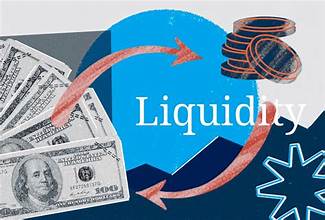The world of cryptocurrency can be incredibly rewarding if you know where to look. Finding altcoins before they explode in value has been a strategy I’ve refined over time, and it has generated significant returns for me and those in my private Discord group. In this article, I’ll walk you through how I discovered Render (RNDR) when it was just $0.57 and how I leveraged specific tools and strategies to identify its potential. At the time of writing, RNDR has climbed to $7.31, marking a 200% increase. I’m still holding my position because I believe there’s even more growth ahead. Let me break down my process for finding these hidden gems.
Step 1: Understanding Market Trends
Before diving into altcoins, it’s crucial to analyze the overall market. I always begin by assessing Bitcoin’s position using a tool called the Bitcoin Rainbow Chart. This chart categorizes Bitcoin’s price into zones like “Fire Sale,” “Buy,” “Hold,” and “Maximum Bubble Territory.” While the chart appears simple, its accuracy over time is impressive. Historically, Bitcoin’s price tends to drop when it enters the “Sell” or “Maximum Bubble” zones and bounces back from “Fire Sale” or “Accumulate” zones.
Currently, we’re in the “Still Cheap” zone, which indicates it’s a great time to accumulate Bitcoin and consider entering the altcoin market. Another key factor is the upcoming Bitcoin halving, scheduled for April 19th. Historically, Bitcoin has shown strong upward momentum following every halving event. This macro view of the market ensures I’m entering altcoins during favorable conditions.
Step 2: Timing Altcoin Investments
While Bitcoin is often a great investment, it typically offers moderate returns, such as 2x or 3x. Altcoins, on the other hand, present opportunities for 50x, 100x, or even 1000x gains. However, the volatility of altcoins also means there’s a risk of massive losses. To minimize risk and maximize gains, I rely on the Altcoin Season Index.
This simple tool provides a clear indicator of whether it’s Bitcoin or Altcoin season. When the bar is low, it’s Bitcoin season, and altcoins tend to underperform. Conversely, when the bar is high, it’s altcoin season, which means many altcoins are surging in value. Using this index, I ensure that I’m entering altcoin positions at the right time, giving myself the best chance for significant returns.
Step 3: Finding Promising Altcoins
Once I’ve determined the market conditions are favorable, I begin the hunt for specific altcoins with high potential. One of my favorite tools for this is DefiLlama, a platform that tracks the Total Value Locked (TVL) in various cryptocurrency projects. TVL represents the amount of money locked or staked in a project, which can provide insights into its popularity and utility.
Here’s an example of how I use this metric:
Let’s say two projects, Aura and Stader, both have around $630 million in TVL. However, their market caps differ significantly. Aura has a market cap of $41 million, while Stader’s market cap is $30 million. In this case, Stader offers more “bang for your buck” because it has a lower market cap relative to its TVL. This strategy of comparing TVL to market cap helps me identify undervalued projects that are likely to rise.
It was through this analysis that I discovered Render (RNDR). As AI technologies began gaining momentum, I realized that RNDR, an AI-focused crypto, had tremendous potential in the space. By investing early and holding through its growth, I capitalized on the hype surrounding AI and cryptocurrencies.
Step 4: Learning from the Experts
Another key part of my strategy is studying the portfolios of major players in the crypto world. Using a tool called Arkham, I can track the blockchain addresses of famous traders, hedge funds, or even developers like Vitalik Buterin (the creator of Ethereum).
With Arkham, I can see every transaction they make—buys, sells, and even the coins they’re holding. For instance, if I see a big name like Vitalik accumulating a lesser-known altcoin, it’s a strong signal to dig deeper into that project. This method provides valuable insights and often leads me to coins that are flying under the radar.
Step 5: Combining Tools for Maximum Effect
Each of these tools—Bitcoin Rainbow Chart, Altcoin Season Index, DefiLlama, and Arkham—has its strengths. However, the real power lies in combining them. By using these tools together, I can:
- Identify buy and sell zones for Bitcoin.
- Determine whether it’s the right time to invest in altcoins.
- Discover undervalued projects with strong fundamentals.
- Track what top traders and developers are investing in.
This holistic approach ensures that I’m not just throwing darts in the dark. Instead, I’m making informed decisions backed by data and analysis.
Final Thoughts
Finding altcoins before they blow up requires patience, research, and the right tools. By understanding market trends, timing your
Top of Form
Bottom of Form
Altcoins, or alternative cryptocurrencies, are increasingly popular among investors seeking diversification beyond Bitcoin. With thousands of options available, analyzing altcoins effectively is essential to identifying promising projects and avoiding risky investments. This guide outlines key factors to consider before investing in altcoins, helping you make informed decisions in the dynamic cryptocurrency market.
- Understand the Altcoin’s Purpose
Each altcoin has a unique purpose or use case, which is critical to its value proposition. Before investing, research the coin’s goals and how it intends to solve specific problems.
Questions to Ask:
- What Problem Does It Solve?: Determine whether the altcoin addresses a real-world issue or adds value to an existing system.
- Is the Use Case Unique?: Evaluate if the coin offers something innovative or merely replicates existing projects.
- What Is the Target Audience?: Understand who benefits from the coin and its potential market size.
For instance, Ethereum revolutionized blockchain by introducing smart contracts, while Ripple focuses on streamlining cross-border payments.
- Evaluate the Team Behind the Altcoin
A strong, experienced, and transparent team is crucial for the success of any cryptocurrency project. Investigate the backgrounds of the developers, advisors, and executives.
Red Flags to Watch For:
- Anonymous or Inexperienced Team: Lack of public profiles or relevant experience can indicate higher risk.
- Unclear Leadership Roles: Ambiguity around who is responsible for key decisions suggests a lack of accountability.
Use platforms like LinkedIn to verify team credentials and track records in blockchain technology or related fields.
- Review the Altcoin’s Whitepaper
The whitepaper is a foundational document outlining the altcoin’s technology, vision, and roadmap. It is a must-read for any potential investor.
Key Elements to Look For:
- Clear Objectives: Does the whitepaper clearly define the altcoin’s purpose and benefits?
- Technical Details: Review the underlying technology, consensus mechanisms, and scalability solutions.
- Roadmap and Milestones: A realistic and detailed roadmap demonstrates long-term planning.
Red Flags:
- Overly technical language designed to confuse rather than clarify.
- Lack of tangible goals or vague promises.
- Analyze Market Metrics
Market data provides insight into an altcoin’s adoption, liquidity, and investment potential. Key metrics to evaluate include:
- Market Capitalization
- Indicates the total value of the coin in circulation.
- Compare the market cap to similar projects to gauge relative size and adoption.
- Trading Volume
- High trading volume reflects strong liquidity and active investor interest.
- Beware of altcoins with low volume, as they may be harder to buy or sell.
- Circulating Supply and Total Supply
- Understand the current circulating supply and how it compares to the total possible supply.
- Coins with an unlimited or rapidly increasing supply may face inflationary pressure.
- Assess Community and Ecosystem Support
The strength and activity of a cryptocurrency’s community are significant indicators of its potential success. A passionate and engaged user base often drives adoption and innovation.
Where to Look:
- Social Media: Monitor platforms like Twitter, Reddit, and Telegram for discussions about the altcoin.
- Developer Activity: Frequent updates and contributions on GitHub reflect an active development team.
- Partnerships and Integrations: Collaborations with reputable companies or platforms enhance credibility.
Red Flags:
- Fake followers or bots inflating the project’s perceived popularity.
- Community disagreements or lack of transparency.
- Consider Security and Technology
The technological foundation of an altcoin plays a critical role in its reliability and scalability.
Key Questions:
- How Secure Is the Blockchain?: Research the coin’s consensus mechanism, such as Proof of Work (PoW) or Proof of Stake (PoS).
- Is It Scalable?: Determine whether the network can handle increased demand without compromising speed or cost.
- Has It Been Audited?: Ensure the code has been reviewed by reputable third parties to identify vulnerabilities.
Projects with innovative solutions to scalability, such as Ethereum’s transition to Ethereum 2.0, tend to attract long-term interest.



